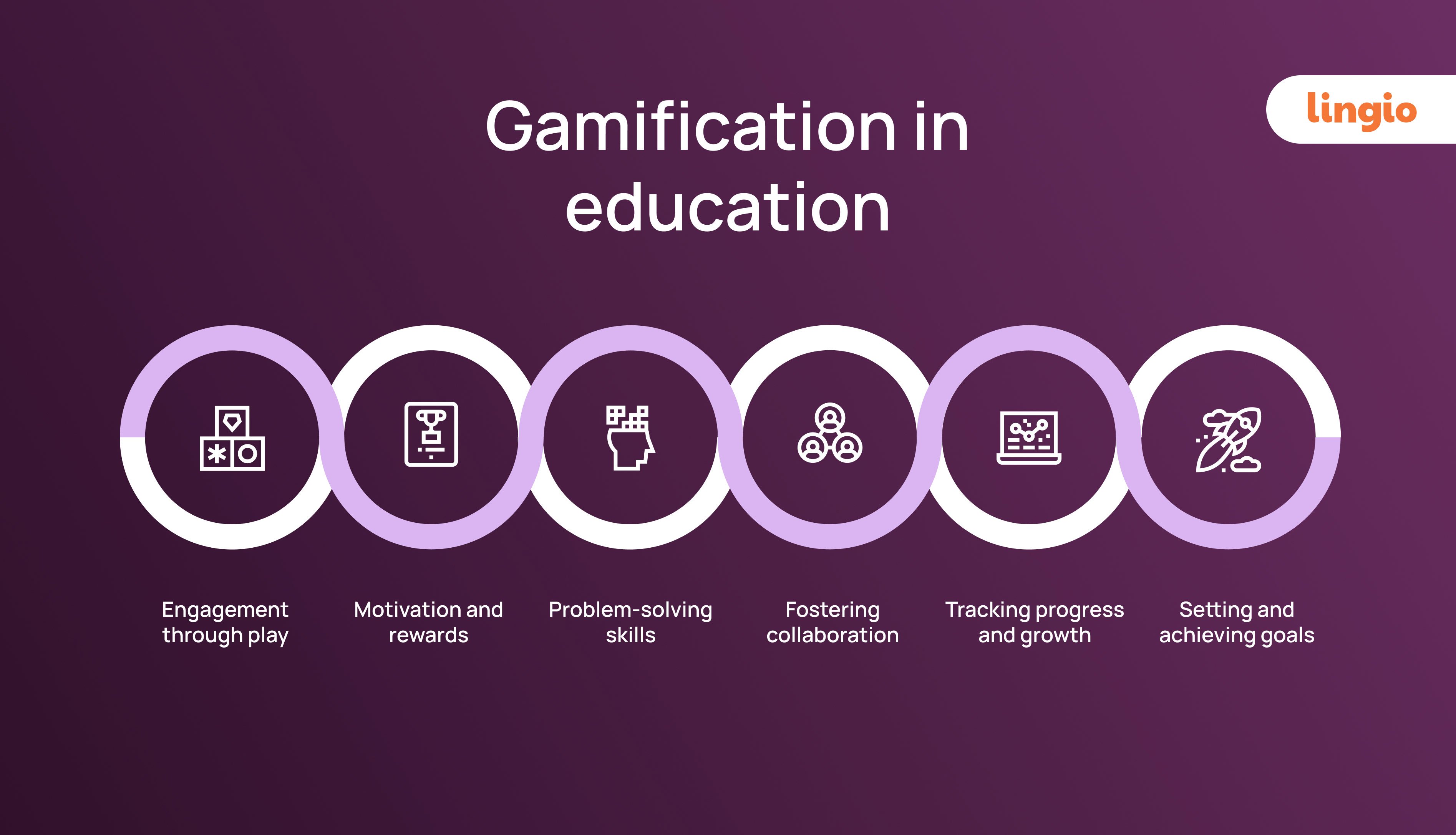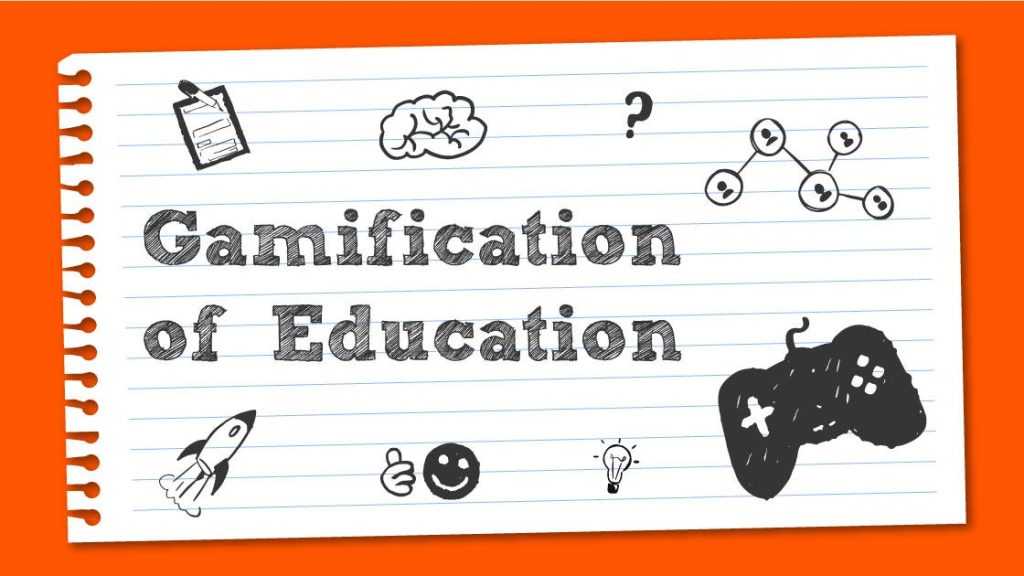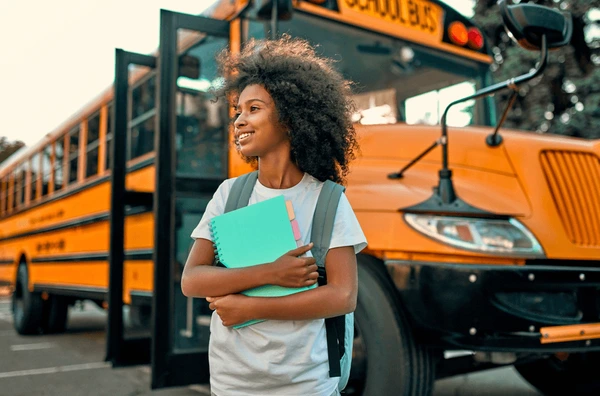Gamification in education is transforming classrooms into interactive, engaging, and motivational learning environments. By integrating game mechanics—such as points, badges, leaderboards, and challenges—into educational settings, gamification makes learning more enjoyable and effective for students of all ages.
This article explores how gamification enhances learning, its key elements, effective strategies, and real-world applications in classrooms and online learning.
What is Gamification in Education?

📜 Gamification is the use of game-like elements in non-game contexts, such as education. It applies game mechanics and principles to encourage motivation, engagement, and better learning outcomes.
- Transforms traditional lessons into interactive experiences.
- Encourages problem-solving, competition, and goal-setting.
- Rewards students for effort, participation, and achievements.
📍 Gamification doesn’t mean turning everything into a video game—it simply enhances the learning experience by incorporating engaging, game-based elements.
Why Gamification Works in Education
- Boosts Motivation – Game mechanics encourage students to stay engaged and complete tasks.
- Enhances Retention – Interactive learning improves memory and knowledge retention.
- Encourages Active Participation – Students become players in their own learning journey.
- Promotes Collaboration & Competition – Gamification fosters teamwork, problem-solving, and friendly competition.
- Provides Instant Feedback – Immediate rewards help students track progress and improve performance.
📍 Gamification taps into intrinsic and extrinsic motivation, making learning both fun and rewarding.
Key Gamification Elements in Education
| Game Element | Purpose | Example in Education |
|---|---|---|
| 🎯 Challenges & Quests | Encourages goal-setting and engagement | Students complete “missions” in math or science projects |
| 🏆 Points & Badges | Rewards achievements and progress | Earning stars for correct answers in a quiz |
| 🎖 Leaderboards | Encourages friendly competition | Ranking students based on participation in class activities |
| 🔓 Levels & Unlockable Content | Provides a sense of progression | Unlocking new lessons after mastering previous ones |
| 🎟 Rewards & Incentives | Motivates students to stay engaged | Extra credit, digital badges, or privileges for participation |
| 🎲 Storytelling & Narrative | Creates immersive learning experiences | A history lesson presented as an adventure game |
📍 When applied correctly, these elements make learning feel like an interactive, goal-oriented experience.
Effective Gamification Strategies for Educators
1. Gamified Quizzes & Competitions 🎮
✔ Use interactive quizzes with points, timers, and instant feedback.
✔ Platforms like Kahoot!, Quizizz, and Gimkit create fun, competitive learning experiences.
📖 Example: A history teacher uses Kahoot! for a fast-paced review game, rewarding students with badges.
2. Leveling Up Through Mastery 🎯
✔ Divide lessons into “levels” or skill-based challenges.
✔ Students unlock new content as they master previous levels.
📖 Example: A math class uses a game-based progress tracker, where students move up levels after passing quizzes.
3. Story-Based Learning & Role-Playing 🎭
✔ Create story-driven lessons where students act as heroes or problem-solvers.
✔ Use role-playing to enhance engagement.
📖 Example: An English teacher designs a Shakespeare-themed escape room, where students solve riddles to “escape” a literary mystery.
4. Digital Badges & Achievement Systems 🏅
✔ Award badges or certificates for accomplishments like participation, creativity, or improvement.
✔ Platforms like ClassDojo, Edmodo, and Mozilla Open Badges track achievements.
📖 Example: A language class uses digital badges for vocabulary milestones, encouraging continuous learning.
5. Classroom Challenges & Team-Based Games 🤝
✔ Encourage group collaboration and competition with classroom challenges.
✔ Use team-based activities to build engagement and teamwork.
📖 Example: A science teacher runs a STEM challenge, where teams design the strongest bridge using household materials.
6. Virtual & Augmented Reality for Immersive Learning 🕶
✔ Use VR field trips to explore historical sites or space.
✔ Integrate AR apps like Merge Cube or Google Expeditions for hands-on learning.
📖 Example: A geography teacher uses Google Earth VR to let students explore ancient ruins.
Real-World Applications of Gamification in Education
📡 1. Duolingo (Language Learning) – Uses streaks, points, and levels to keep users engaged in language learning.
📚 2. Prodigy (Math Learning) – Gamifies math problems by incorporating role-playing and challenges.
🏫 3. Classcraft (Classroom Engagement) – Turns the classroom into an RPG-style adventure.
🔬 4. Minecraft: Education Edition – Allows students to build historical sites, practice coding, and explore STEM concepts.
📍 Gamification is widely used in modern education technology, making learning more engaging for students worldwide.
Challenges & How to Overcome Them
🚧 1. Overemphasis on Competition – Can discourage students who struggle with rankings.
✅ Solution: Focus on collaboration, mastery-based progression, and personal achievement rather than just leaderboards.
🚧 2. Complexity & Time Constraints – Teachers may struggle to integrate gamification effectively.
✅ Solution: Start with small changes, like gamified quizzes, and gradually add more elements.
🚧 3. Digital Divide & Accessibility Issues – Not all students have access to technology.
✅ Solution: Use low-tech gamification methods, like classroom-based challenges and paper-based badges.
📍 Effective gamification balances engagement, inclusivity, and meaningful learning outcomes.
The Future of Gamification in Education
🚀 AI-Driven Personalized Learning – Adaptive learning platforms will customize experiences based on student progress.
🌍 Global Collaboration & Gamified Learning Communities – Students worldwide will engage in multiplayer educational challenges.
🧠 More Immersive AR & VR Experiences – Virtual environments will provide hands-on, gamified learning in real-time.
📍 Gamification will continue to evolve, making education more dynamic, interactive, and effective.
Final Thoughts: Making Learning an Adventure
Gamification transforms education into an engaging, interactive, and fun experience, motivating students to take an active role in their learning. Whether through quizzes, badges, storytelling, or VR, gamification fosters curiosity, problem-solving, and enthusiasm for education.
🎮 What gamification strategies have you used or experienced? Share your thoughts below! 🚀📚


